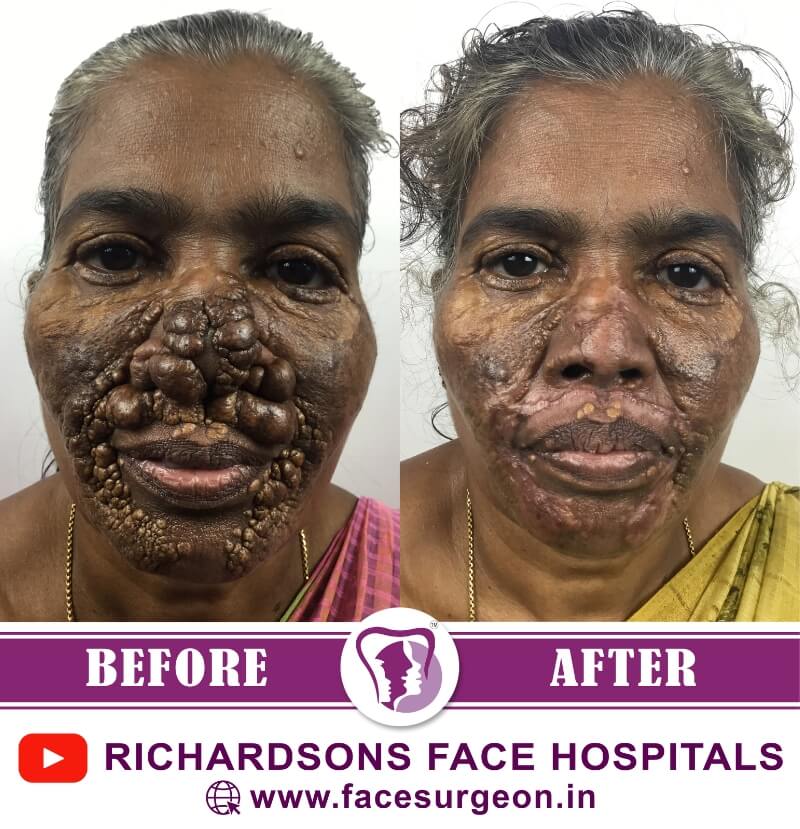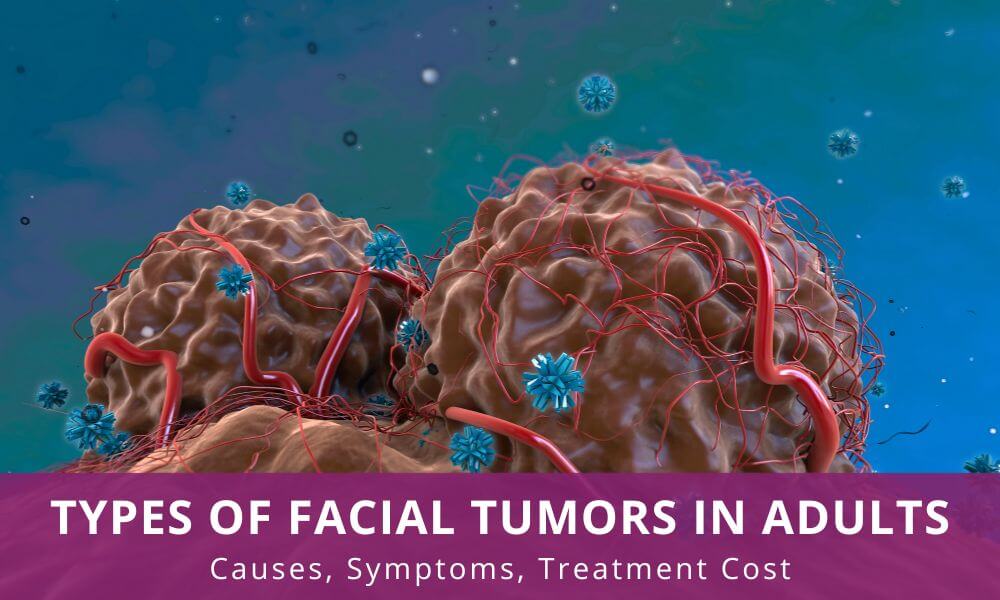Types of Facial Tumors in Adults | Causes, Symptoms, Treatment Cost
Facial tumors refer to an abnormal collection of abnormal cells that can seen visually, felt, or detected through an X-ray, CT, or MRI scan. This abnormal collection of cells is called neoplasm and can be categorised as benign, malignant, or premalignant. Read on to learn more about types of facial tumors in adults if you detect an unusual facial lump.
What Are the Different Types of Facial Tumors in Adults?
Benign Tumors
Benign tumors do not spread to other parts of the body but could press against the nerves or blood vessels or cause other symptoms. A benign tumor could have different names depending on where it develops, facial tumors that grow on the face are lipomas and are found in the subcutaneous tissues. They are round, soft, and grow very slowly.
Benign face tumor symptoms don’t usually have symptoms but could cause pain, discomfort, or even headache if they grow large enough.
Multiple factors could cause benign tumors, ranging from genetics, diet, stress, infection, or even injury. They are characterised by a raised and discoloured bump that seems smooth or rough to the touch but firm when pressing it.

Malignant Tumors
Malignant tumors are cancerous and can metastasise, i.e., spread to other parts of the body. In this situation, the abnormal cells continue to grow and spread, and if left untreated, could be life-threatening. These tumors spread rapidly, but in some instances, they could grow slowly and over time. Here again, there are different types of malignant tumors, depending on the location on the face, it is called melanoma.
Malignant face tumor causes could range from chemical pollutants and other environmental pollutants, genetics, stress, or even a weak immune system. Malignant face tumor symptoms include pain, physical signs of lumps, and even displacement of facial features.
Premalignant Tumors
While this tumor isn’t cancerous, the doctor may suggest monitoring it closely, looking for any changes. For instance, actinic keratosis affects fair-skinned people and appears crusty and scaly.
Depending on the severity, there can be different types of facial tumors in adults. The most common include neurofibromatosis, cystic hygromas, fibrous dysplasia, and dermoid cysts. While neurofibromatosis appears flattish but could be round and protruding, resembling a birthmark, cystic hygromas are initially small and painless but become enlarged and swollen. Fibrous dysplasia can occur anywhere on the bone and can grow very slowly. Dermoid cysts are benign and go unnoticed until they cause discomfort.
Irrespective of whether they are benign or malignant, you must consult an oral and maxillofacial surgeon to explore face tumor surgery options. Call now to schedule a consultation to learn more about types of facial tumors in adults.

